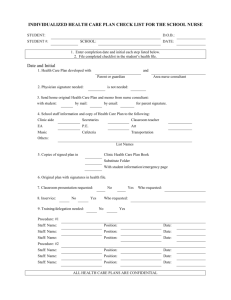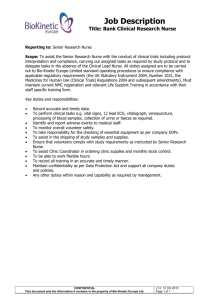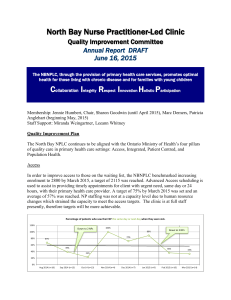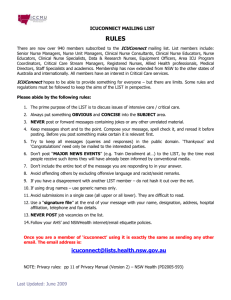Project Execution and CQI Tools PPT
advertisement
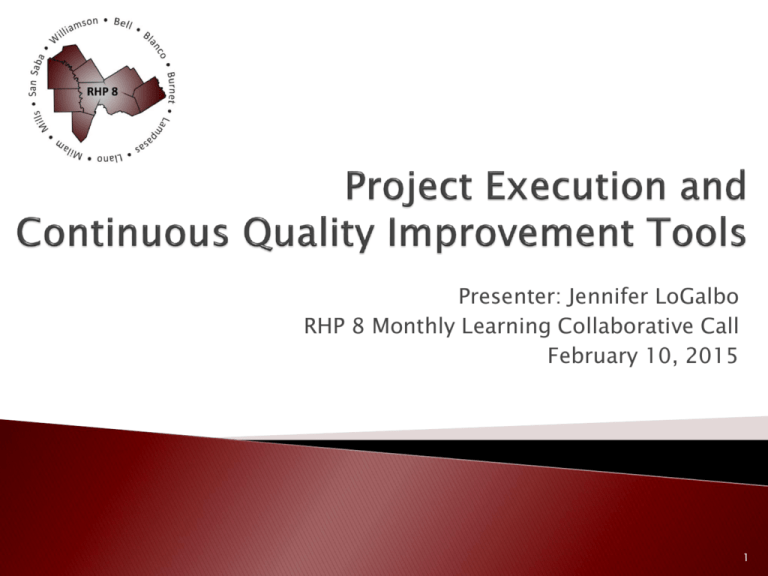
Presenter: Jennifer LoGalbo RHP 8 Monthly Learning Collaborative Call February 10, 2015 1 Review Project Management (PM) Process Define Execution Phase Review Continuous Quality Improvement (CQI) Tools Q&A 2 Initiating Planning Executing Monitoring •Select project manager •Define roles and responsibilities •Complete the work •Divide large projects •Determine project team •Report on performance •Measure performance against baseline •Create objectives •Estimate costs and time •Create communication plan •Manage people •Update documents Closing •Archive and index project documents •Gather lessons learned •Perform quality control 3 Executing (see complete list of 22 activities on slides 15-16) •Execute work according to the project management plan •Request changes •Continuously improve •Determine whether processes are correct and effective (quality assurance) •Evaluate team and individual performance •Hold team-building activities •Give recognition and awards •Release resources as work is completed •Report on project performance •Manage stakeholder engagement and expectations 4 Executing (see complete list of 22 activities on slides 15-16) •Execute work according to the project management plan •Request changes •Continuously improve •Determine whether processes are correct and effective (quality assurance) •Evaluate team and individual performance •Hold team-building activities •Give recognition and awards •Release resources as work is completed •Report on project performance •Manage stakeholder engagement and expectations 5 Purpose: Complete project work as defined in the project management plan, and meet project objectives outlined from the onset. Goal: Achieve completion of project deliverable(s) within the planned budget and schedule. DSRIP semi-annual reporting requirements – April and October. 6 Continuous Quality Improvement What is CQI? CQI tools: 1. Cause & Effect Diagram (a.k.a., Ishikawa or Fishbone) 2. 5 Why’s 3. Business Process Mapping (BPM) 4. Plan, Do, Study, Act 7 Reference: Cause and Effect Analysis: Identifying the Likely Causes of Problems. (n.d.). Retrieved January 14, 2015, from http://www.mindtools.com/pages/article/newTMC_03.htm 8 Lack of transportation No public transportation in ABC County Roads do not offer bike lanes Personality conflict with staff Clinic has a high rate of turnover Patient prefers to receive car in home setting (maybe a candidate for paramedicine project?) Problem: Patients not showing up for appointments at clinic Goal: Patients show for appointments Has trouble with memory Does not have cell phone/email address to send reminders Forgot about appointment time and date Single parent and can’t afford a sick day Did not have anyone to pick up child at school Did not have sick leave at work 9 Reference: (n.d.). Retrieved January 14, 2015, from https://www.tuzzit.com/en/canvas/5_whys_canvas 10 Problem Statement: The patient waited longer than 45 minutes before they were seen by a nurse. •Why did the patient have to wait longer than 45 minutes before they were seen by a nurse? Why? •The nurse was not in the clinic. •Why wasn’t the nurse in the clinic? Why? •The nurse was at the hospital. •Why was the nurse at the hospital? Why? •The nurse needed to pull the patient’s file before the appointment. •Why wasn’t the nurse able to pull the patient’s file at the clinic? Why? •The nurse was unable to pull the information using the current EHR system. •Why wasn’t the nurse able to pull date using the current EHR system? Why? •Clinic staff have not received usernames and login information from the IT department. 11 Charts, graphs and diagrams visually display what the process is and who is involved Various tools are available, some of these include: 1. 2. 3. 4. 5. 6. Process Charting Top-Down Flow Chart Block Diagram Activity Chart Work-Flow Diagram Cross-Functional Flow Chart Note: See RHP 8 Anchor team presentation from November 14, 2014 for additional information on the tools above 12 13 Reference: Plan, Do, Study, Act (PDSA). (n.d.). Retrieved January 14, 2015, from http://www.institute.nhs.uk/quality_and_service_improvement_tools/quality_and_service_im provement_tools/plan_do_study_act.html 14 1. 2. 3. 4. 5. 6. 7. 8. 9. 10. 11. Execute work according to the project management plan Produce product deliverables (product scope) Gather work performance data Request changes Implement only approved changes Continuously improve Follow processes Determine whether processes are correct and effective (quality assurance) Perform quality audits Acquire final team Manage people 15 12. 13. 14. 15. 16. 17. 18. 19. 20. 21. 22. Evaluate team and individual performance Hold team-building activities Give recognition and awards Use issue logs Facilitate conflict resolution Release resources as work is completed Send and receive information, and solicit feedback Report on project performance Manage stakeholder engagement and expectations Hold meetings Select sellers 16 Mulcahy, R. (2013). PMP exam prep: Accelerated learning to pass PMI's PMP exam (8th ed.). Minnetonka, Minn.: RMC publications. Contact Information: Jennifer LoGalbo RHP 8 Program Director 512-341-4962 logalbo@tamhsc.edu 17 18

